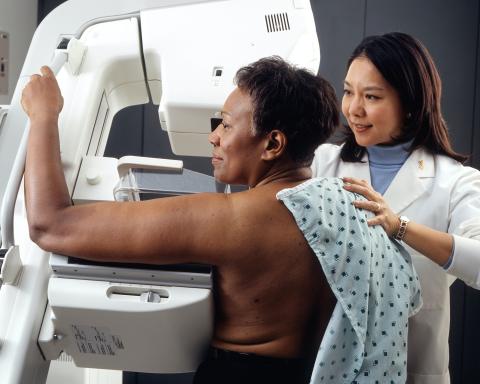By 2050, breast cancer deaths will increase by 68% worldwide if the current trend continues
An international team has analysed data on the incidence and mortality of breast cancer in 185 countries. In 2022, 2.3 million new cases and 670,000 deaths were recorded and, with this trend, it is predicted that by 2050 these figures will increase by 38% and 68% respectively, particularly affecting low-income countries. Although the mortality rate fell in 30 of the 46 countries studied over the last ten years, only seven of them met the WHO targets of reducing it by at least 2.5% each year. The results are published in the journal Nature Medicine.

Josep Maria Borràs - mortalidad cancer mama EN
Josep M. Borràs
Scientific coordinator of the National Health System Cancer Strategy, director of the Catalan Oncology Plan and Professor of Preventive Medicine and Public Health at the University of Barcelona
The article is very interesting. It is based on data collected by the International Agency for Research on Cancer in 185 countries, analysing a period of 10 years and projecting breast cancer cases to 2030 and 2050. The greatest increase is concentrated in developing countries, both in incidence and in mortality.
It is worth noting that in European countries like ours (which has the lowest cumulative risk of dying from breast cancer at 75 years of age), the increase in incidence observed in all age groups is accompanied by a significant decrease in the risk of dying. The increase in Spain is partly explained by the fact that we start from intermediate incidence figures in the European context.
The objectives of the global breast cancer initiative promoted by the WHO of a 2.5% decrease in mortality have only been achieved in some European countries, although not only the annual decrease but also the starting point should be taken into account in order to properly assess this decrease (it is easier to decrease from high mortality figures than from lower figures).
Preventive recommendations for this tumour are limited and the focus should be on rapid diagnosis and screening, as well as on the application of effective treatments to the entire population affected by the tumour.
Conflicts of interest: ‘I have no conflict of interest with these authors, beyond personally knowing one of them’.
Miguel Martín - mortalidad cancer mama EN
Miguel Martín
Head of the Medical Oncology Department of the Gregorio Marañón Hospital and president of GEICAM
I think it's a serious study by the authors and the journal, which doesn't publish just anything and subjects articles to a strict peer-review.
The interesting thing about this study is that it provides very detailed data by area/country on incidence, mortality and trends in breast cancer, which we are all familiar with as a concept, but without such up-to-date and accurate figures.
[Regarding possible limitations] The quality of epidemiological studies depends on the quality of the patient and population records on which they are based, and these vary greatly between countries. But what is described in the article is what we have and it is the best possible approximation to reality.
Conflict of interest: he has received research funding from Roche, PUMA and Novartis (his institution) and fees for advisory boards and conferences from AstraZeneca, Amgen, Taiho Oncology, Roche/Genentech, Novartis, PharmaMar, Eli Lilly, Taiho Oncology, PUMA and Pfizer.
Kim et al.
- Research article
- Peer reviewed
- People



